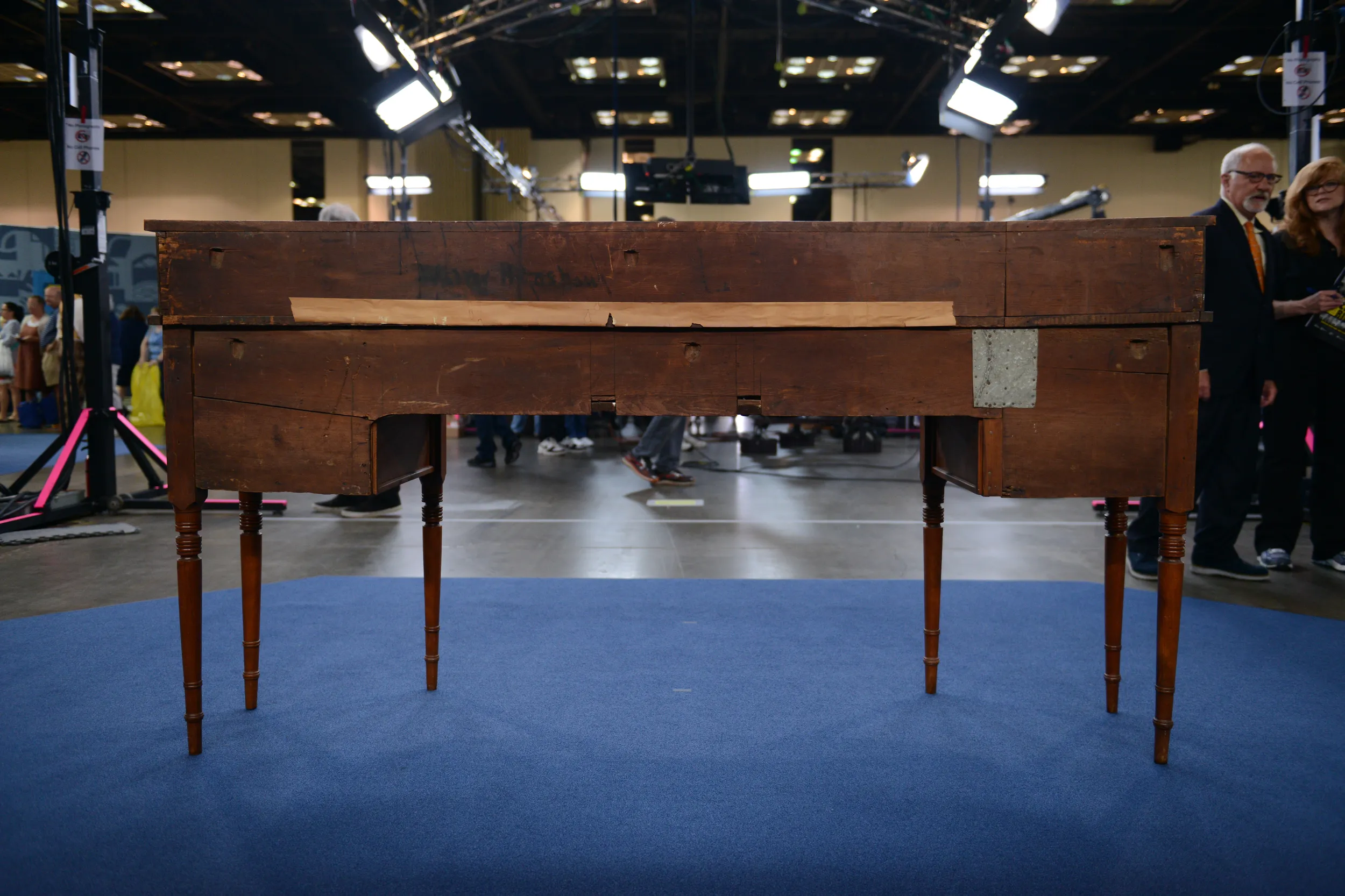GUEST: It has been in my family five generations. It was brought from Roxburgh, Scotland, to Canada by a sea captain, Richard Christie, who died at sea in 1830. My great-grandfather bought it at his widow's auction for $20 and a cow.
APPRAISER: That's quite a provenance, I must say. So do you know anything about when it was made or where?
GUEST: I do not, except that the man that brought it died in 1830, so... Probably in Scotland. And I think the raised step makes it a Scottish sideboard.
APPRAISER: That's an interesting observation. So, when he died in 1830, I would think that this piece was almost new.
GUEST: Really?
APPRAISER: So this is a piece of furniture that was made by a pretty sophisticated cabinetmaker who had access to really wonderful materials. So we could call it a Neo-Classical style, or Sheraton, if you will, made in England or Scotland. We're not sure.
GUEST: Uh-huh.
APPRAISER: But the cabinetmaker, in designing this, was intent on using the symmetry of the piece, the choice of veneers, the drawer arrangements and all, to make a very satisfying piece. I know looking at it makes me feel more well-balanced. I'll put it that way. It's interesting, because some things are not as they might seem. For example, this center section in the top is simply there for decoration. It's a focal point, if you will. These sliding doors reveal a useful interior. And they work like a champ, I might say. Now, these drawers are not drawers at all. They're faux drawers. They're there just for show. So this projecting base has drawers which you would think aren't necessarily drawers. Just, "Oh, this is just another panel." But in actuality, this is a drawer. The cabinetmaker used a variety of materials. For example, this is called crossbanding. Crossbanding is composed of mahogany veneer and ebony stringing. These panels are birdseye maple. These drawer fronts with the crossbanded borders are tiger maple. The whole piece, I believe, is a wavy cherry. The wood is a little bit of a mystery. It has this very vigorous grain. It looks like currents on the ocean. Now, there is one thing about this sideboard that we find mysterious. At some point—you may be aware of this or maybe not—the whole piece was cut off right here.
GUEST: I do know that.
APPRAISER: And do you know why?
GUEST: My great-grandfather, who purchased it, had it fit beside a chimney, and it wouldn't fit without cutting off an end.
APPRAISER: And when you look at the back of the piece, you can see they reunited this end, and they've reunited it with a piece of galvanized metal to hold it back on there. So you might say, how does this affect the value? Well, it doesn't help it. But on a very... General comment would be that dining room furniture today is not nearly as valuable as it was years ago, because formal dining in a designated room, people today don't entertain in that way. So sideboards, dining room furniture have suffered in the marketplace. So I think for insurance purposes, in this market today, I would probably perhaps insure it somewhere in the area of maybe $7,500. In an auction situation, this is the sort of furniture that can be bought so reasonably. It could be bought for a few thousand dollars, which is preposterous, because we're looking at a masterful piece of work, handmade with extraordinary materials. We can only hope that we both last long enough to see formal dining come back in style, because this deserves a great future.





